This article talks about our time of lockdown on board Moonwave due to the Covid19 crises in first half of 2020 and what we learned about life on board…
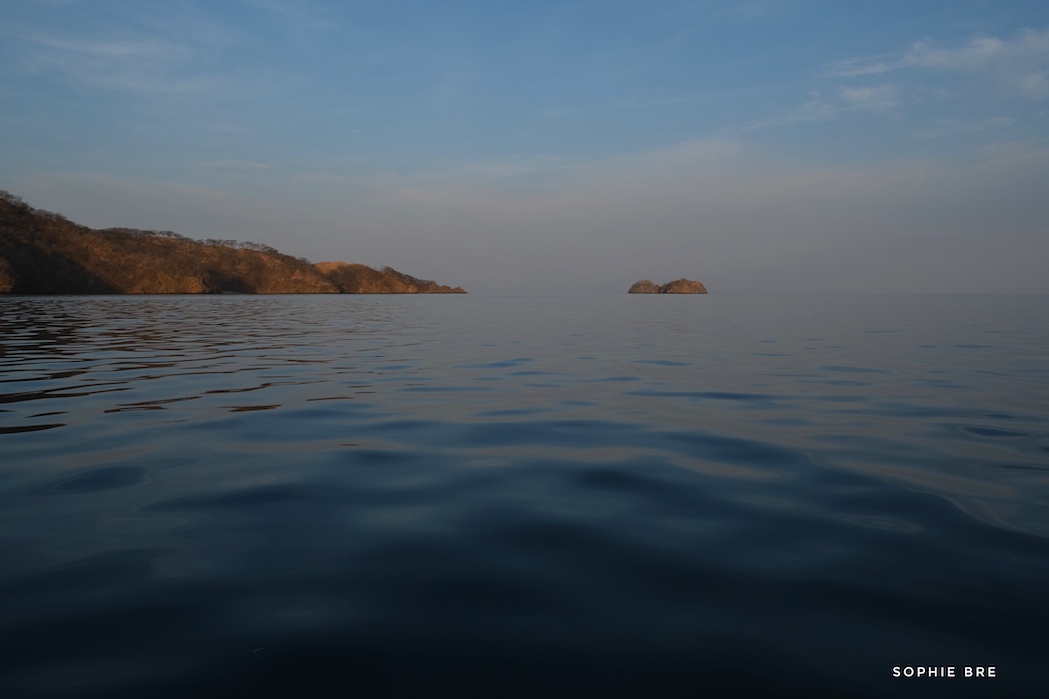
Like many other cruisers and almost everyone world wide our original plans from March to July 2020 have been “boulversée“. But let’s look at it chronologically. This part of our journey started on the 21st of March 2020 – the day we did the transit of the famous Panama Canal. See blog entry: Atlantic to Pacific – Passage of the Panama Canal [March 2020]
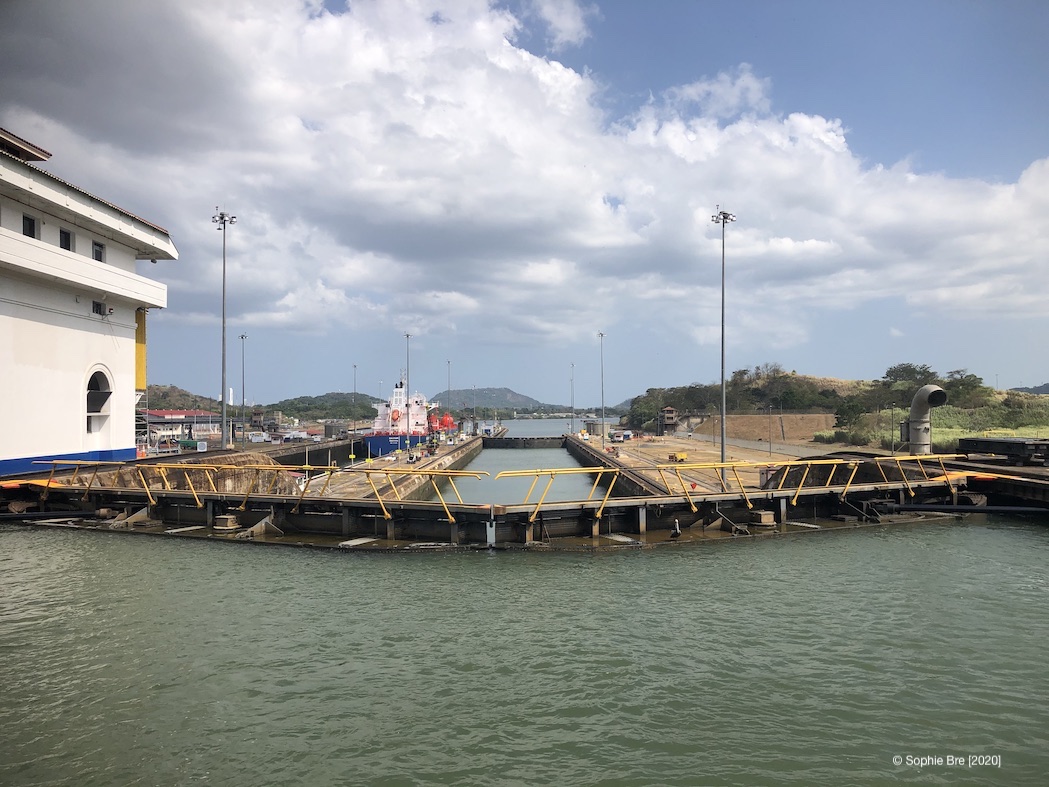
When casting the dock lines at ShelterBay Marina on the Caribbean side, we did not know at that time that it would be the last time our feet will be in contact with land until we arrive in Nuku Hiva, 116 days later. Despite Nuku Hiva is a tiny island relative to the Pacific Ocean that surrounds it, that still qualify for “terra ferma” – land.
We transited the canal and got our paper works to set sail for the South Pacific right away. We were really happy and proud to have made it into the Pacific but just as we left with no way back, we learnt that French Polynesia was closing their borders. So we decided to stay “at sea” until this would change. As we had our exit papers from Panama, staying around was not an options, neither was going back through the canal, other alternative like USA or Canada were shutting down too. Mexico with the hurricane season approaching in July was not an option to get stuck at. South America starting their cold season did not seem a good choice neither. So we decided to try our luck with Costa Rica. The idea was to stay put until the situation changes either in Costa Rica, Galapagos or French Polynesia. Originally nobody would have imagined that this would last longer than a couple of weeks. But it did…
And so in between Panama [end of March 2020] and Galápagos Islands [end of June 2020] were laying three months of beautiful Pacific sunsets and waiting without being able to enter any countries in the vicinity and never going ashore and touch land…
So here are some facts that we have learned from our 90 days at anchor and 26 days at sea sailing [Panama to Costa Rica, Costa Rica to Galapagos & Galapagos to Marquesas Islands] without touching land and contact to local populations:
- Our solar installation was a great plus for our energy balance on board. Depending on the hours of sun [rainy season less effective] the generator only ran for 45min every 3 to 4 days. This included electric cooking, baking bread, water maker and washing machines with no restraining needs for 2 persons.
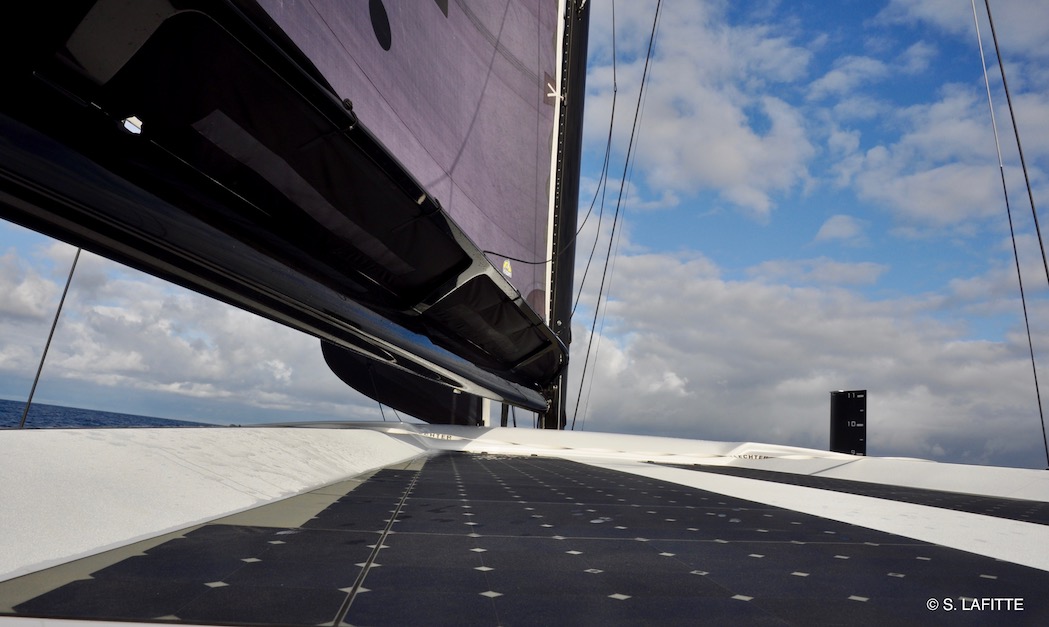
- The Torqeedo Deep Blue Hybrid system and other electrical system were turned on non-stop without any issues, we haven’t been on shore power for months
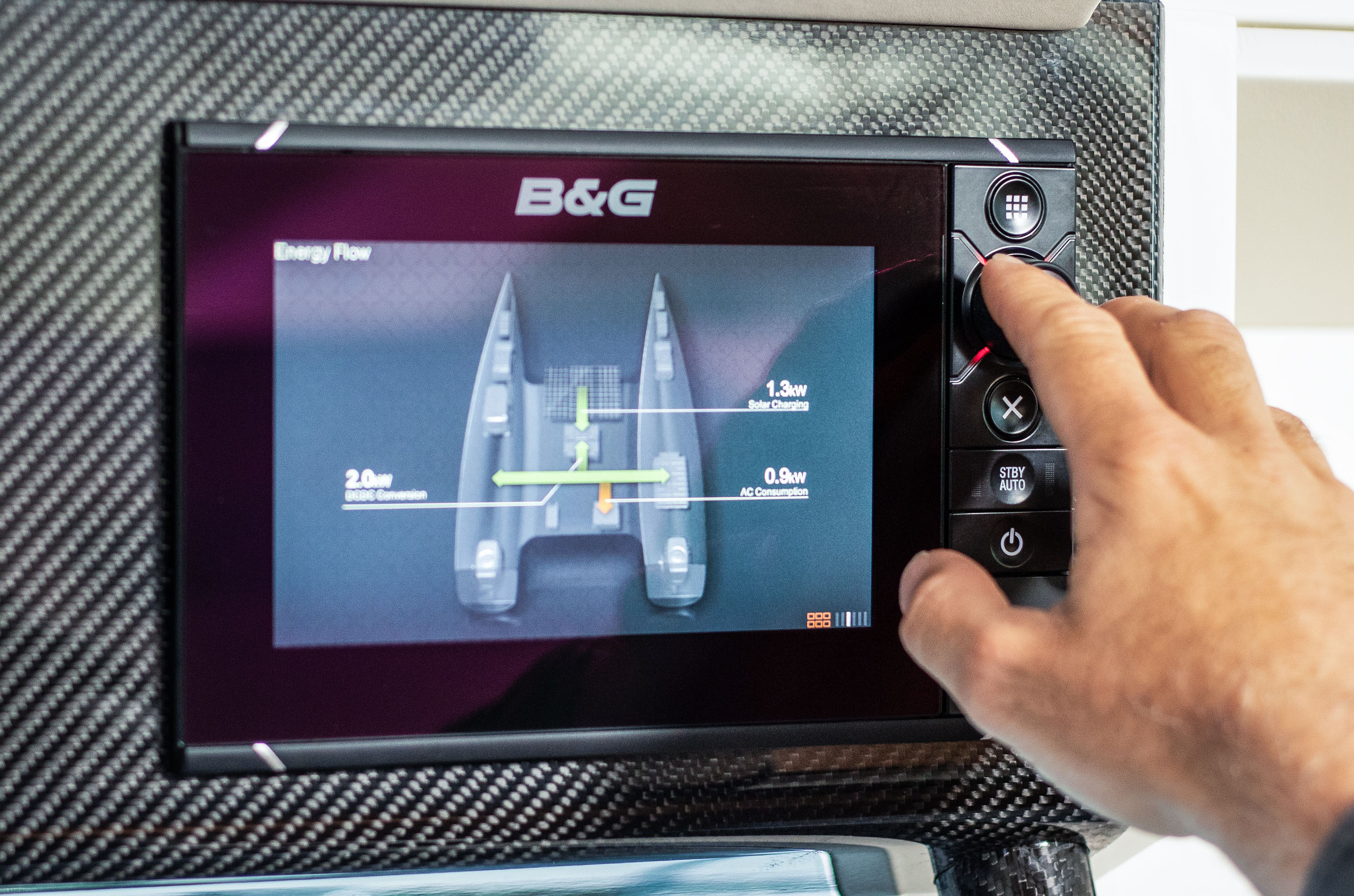
- We only turned off the whole boat electricity a couple of times when there were big lighting storms near by. This got more more frequent the further the rainy season progressed. The idea is to have no “current” flowing on the boat to not attract lighting in the air
- The maintenance for the Hybrid System is very little – most important to keep the sea-strainers of the seawater cooling circuits clear and clean. We had so little engine hours on generator due to solar charging both battery banks that even there was not a lot of maintenance needed. In general it’s the generator that needs the most attention of the whole system.
- The most important equipments on board: watermaker and washing machine. Let’s say during the rainy season it would probably be possible to fill the water tanks with rain but during our time at anchor in the dry season, it didn’t rain once in six weeks. In the hot [and humid] climate, being able to take showers without regret and to have fresh towels and clean sets of cloths to change in, is very important for hygiene and well being. When living on land or staying in marinas, washer/dryers are often close by and access is no big deal therefore they are often considered to be a “luxury” on cruising boats due to energy and water consumption, space and weight. But believe me the washing machine is knows how to render herself essential if stuck at anchor and at sea for 4 months without being allowed ashore…
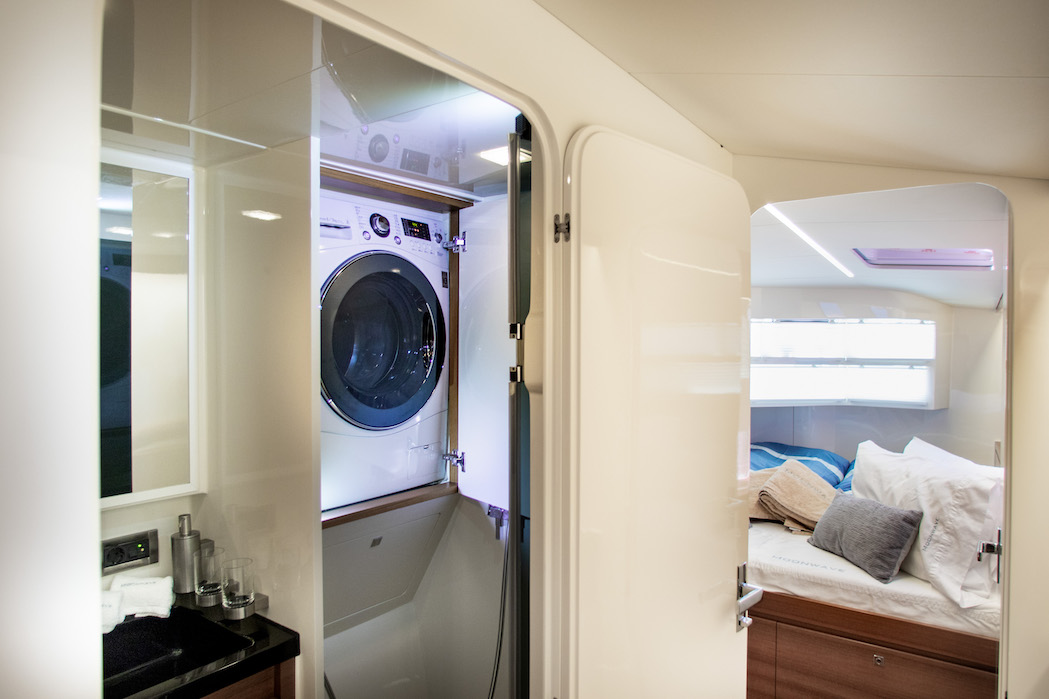
- On the essential side, I might also mention a good internet connection. When in “solitude” without social contact to anyone around, the possibility to call and chat with family and friends overseas is just essential. Thanks to everyone for “keeping” us company on the other side of the “screen/line”.
- On the culinary side of things – we were lucky to be supplied by local fishermen with fresh food and lots of refreshing local fruits and vegetables. When not being able to move and do sports you need to be careful to still keep a well balanced meal plan and not to forget to cover the basic vitamins etc.
- We took the chance at the beginning of the “lock down” to take a lot of the systems and equipment apart for deep cleaning, check and maintenance to be ready for the planned transpacific crossing. This worked out very well.
- One important part of keeping Moonwave clean and seaworthy was not only to keep the top sides shiny but also the hulls free of algees and marine creatures. Due to warm temperatures life grow fast and regular hull cleaning secessions were necessary. Fun or let’s say smelly fact, the anchor chain after three months of constant use, had a whole marine ecosystem on it.
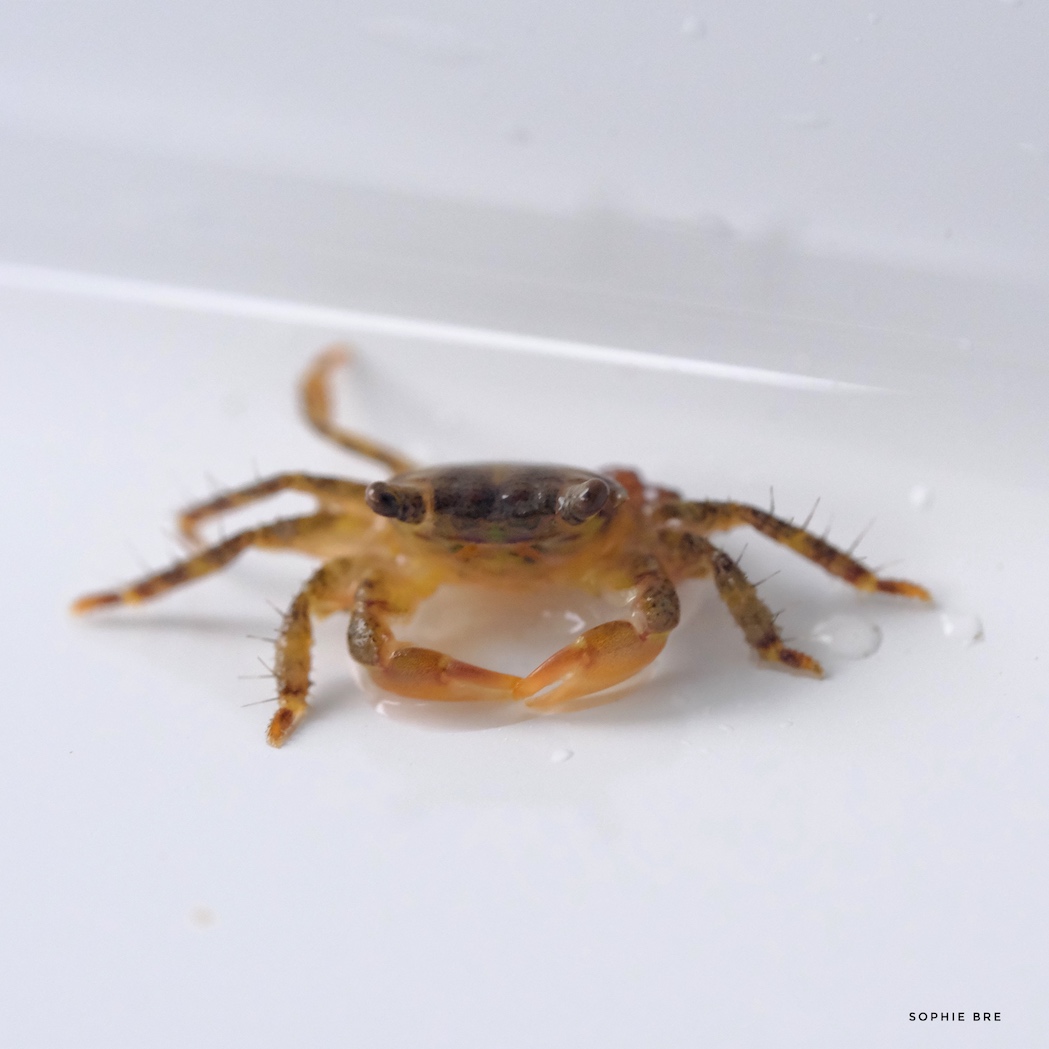
- On the personal side, we were already used to live and be together 24/7 but not being allowed off the boat added a whole new dimension of “life-aboard” experience. Never apart for more than a couple of feet. Still together and happier than ever ;-)
- One more note on the system and installation on board Moonwave – all the work and effort during the last years in making them and Moonwave reliable has paid off. Thanks to all the suppliers, subcontractors, engineers and owner for assisting us to make this happen. Moonwave took super good care of us with plenty of fresh water and lots solar power and we took care of her… that’s not even to mention the pleasure to sail her across the Pacific but that’s not part of this article.
When sailing up the coast from Panama to Costa Rica, we noticed lots of small islands and lonely bays on the pacific coast of Panama. This remote cruising grounds look like worth the trip and hopefully next time we are in the area, we will be able to enjoy them. Same for Costa Rica, the multitude of National Parks and beautiful shore line are making us envious to come back soon and discover & explore this beautiful Central American country.
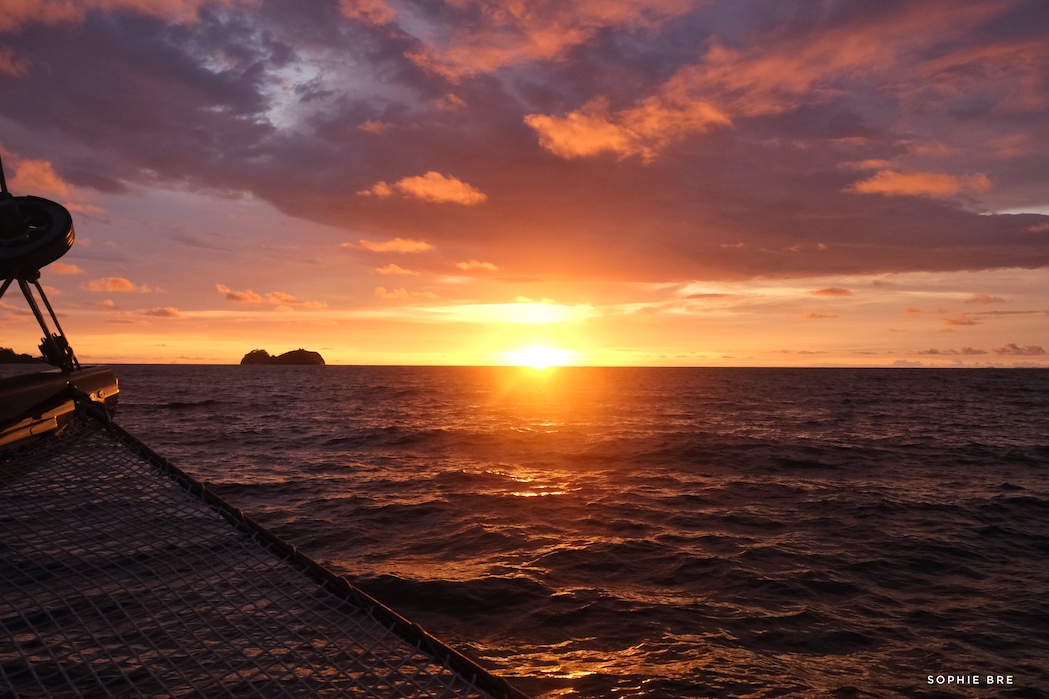
Regarding discovery, our pitstop in the Galápagos Islands only lasted around 48h. We had a small sail repair to be done locally. This time, our sail was allowed ashore to be repaired by the sailmaker but we had to stay on board. We got a special permission to stop in the Bay of Santa Cruz for this technical reason. When the officials with our agent came on board to check our paper works and Moonwave, we felt crowded. It had been months since we have seen so many people in one place and even longer on board Moonwave. The delegation was made up by 9 men and a dog. The dog was part of the narcotics division. The hull got inspected with an underwater drone. Apparently there are too many sharks in the bay so no volunteers for diving to inspect the cleanliness of the hulls in person.
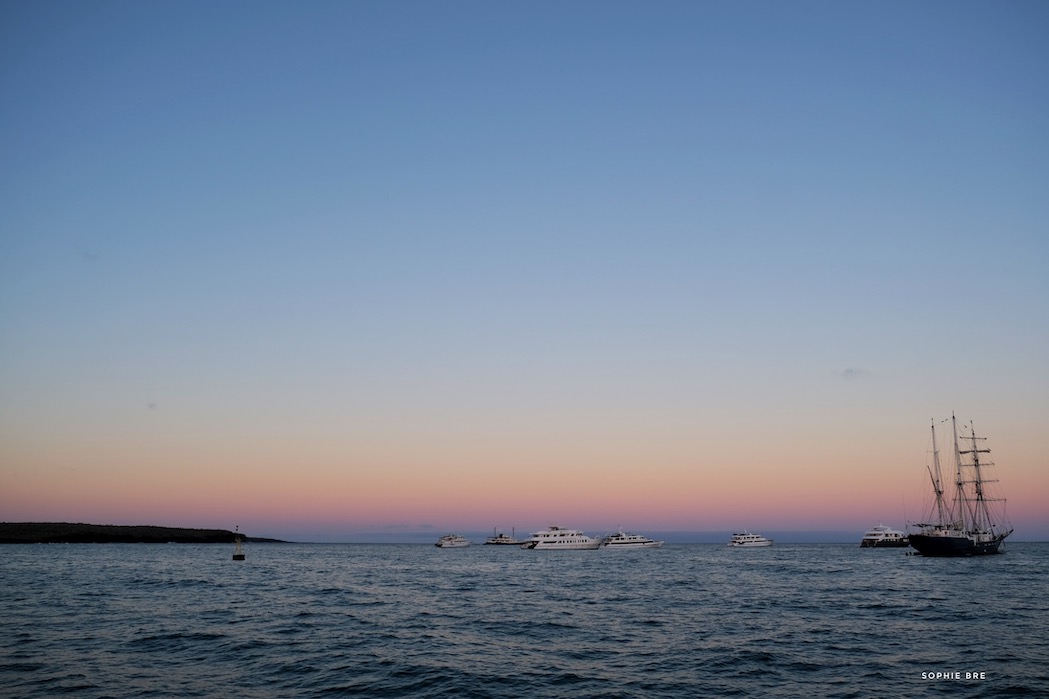
It would be nice to come back to the Galápagos Islands and actually see the islands and do a tour of the marine parks etc. Once things are back to normal…
Academy Bay, the anchorage of Santa Cruz is actually quiet big but it was packed with boat at anchor. This anchorage and others in the Galapagos main Islands were all full, not by fellow cruiser but by passenger vessels in all sizes and shapes. Those vessels normally welcome tourists either for the day or for live aboard cruises around the islands to discover the famous ecosystems. Crazy to see so many “unemployed” boats and crews in one place – can only image the economic impact on those local crews and the whole islands infrastructure and everybody’s life.
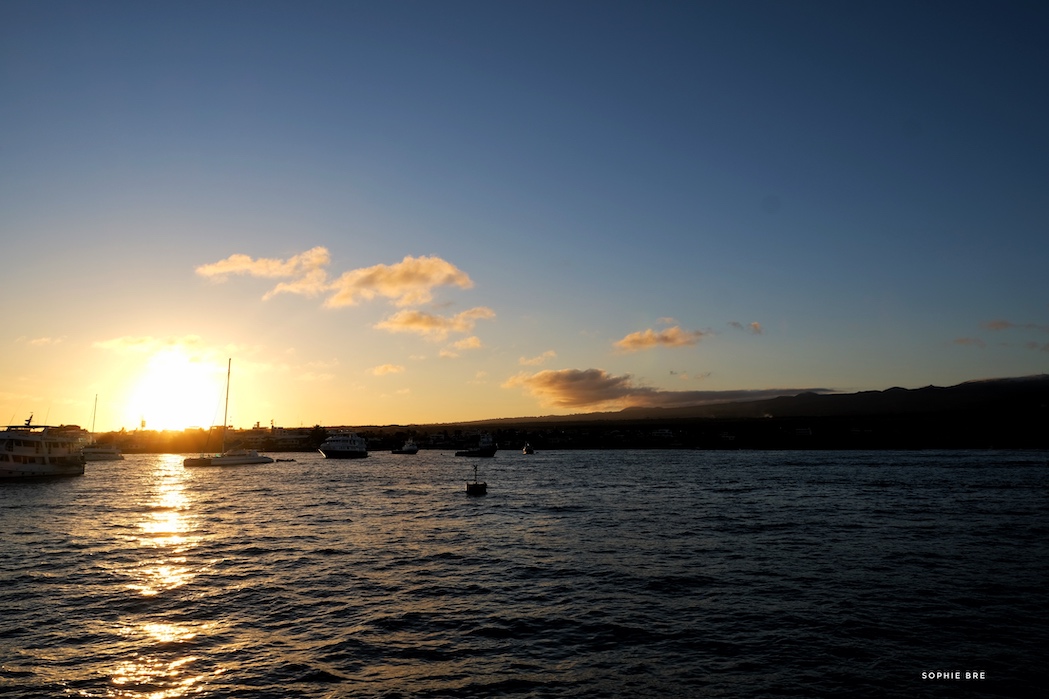
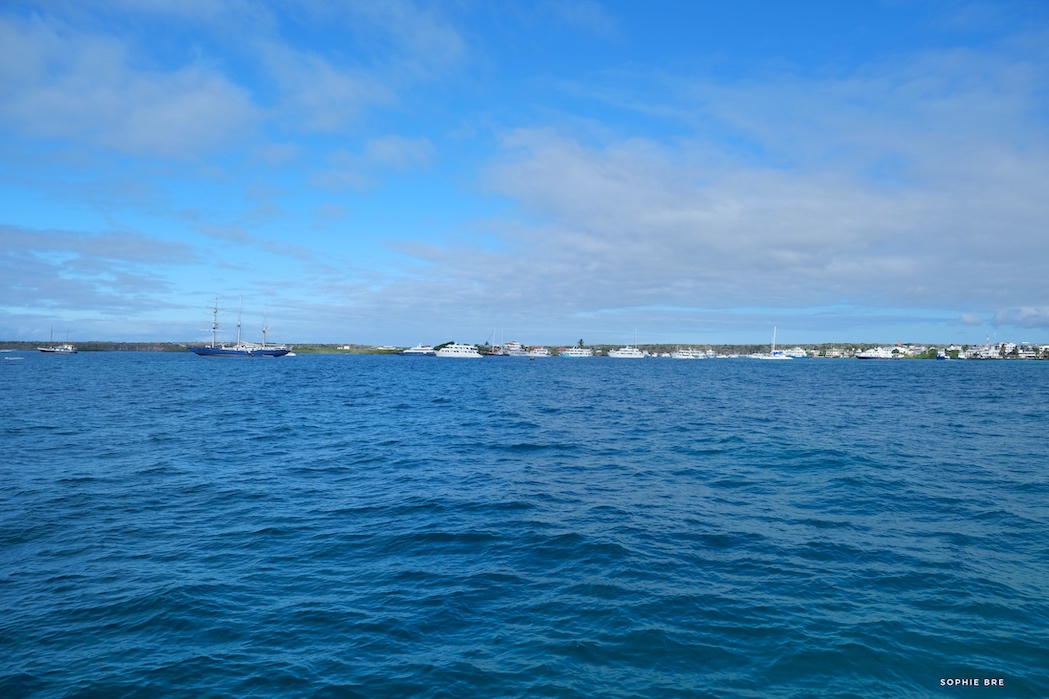
Some more “impacts” from the crises that are worth mentioning here:
Originally lots of “buddy” boats and friends were also planning to sail the South Pacific in 2020 – Pacific Odyssee . Unfortunately most of them didn’t made it to Panama and the Pacific in time and had therefore their cruising plans revised. Will catch up hopefully soon again and our paths will cross. But this will give us the opportunities to make another all new set of friends on the way. Maybe we will call them the COVID era friends.
Weather forecasts – so far the weather forecasts for crossing the Pacific Ocean have not been as reliable as in other areas. One theory that we read is that the weather prediction are impacted by lack of weather data transmitted by air planes. The international air travel has reduced a lot and so has the number of plans circulation and collecting weather data. We don’t know if the cause is true but the fact is the wind directions where off most of the time.
One additional consequence of the travel ban and closed borders – when we set sails for the Pacific crossing, it ended up only being the two of us. Not by choice but there was just nobody who was able to join us for the trip. See Blog Entry: Darwin to Gauguin [July 2020]
Tu sum up, Moonwave took very well care of us at the anchorage. And still now, as before, we always prefer a nice anchorage over being stuck in a Marina. Moonwave is well set up for remote and liveaboard cruising. But, here comes the but, being solitary for so long is definitively not something we want to repeat. We enjoy the social parts of cruising, getting to know other adventurers and exchanging with others is an important part of the big picture. We played the “quarantine” by the book, staying away from others and land but now we are really looking forward to get back to discovery of shores and civilization. And a meal cooked for us by someone-else and without dishes – would be a nice luxury as well…
And more to come soon in our ABC of lockdown…
Let’s see how long the “landsickness” will last when touching land again :-)

